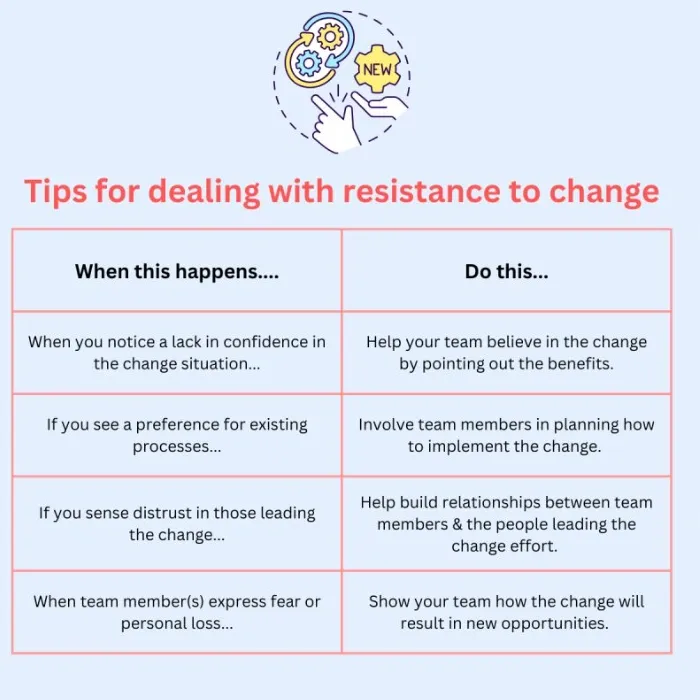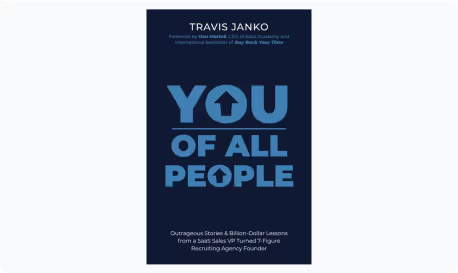Noticing how change is affecting others and how you deal with it will make or break your change initiative, which underscores a fundamental truth often overlooked: change is a profoundly human experience, and its success...


Noticing how change is affecting others and how you deal with it will make or break your change initiative, which underscores a fundamental truth often overlooked: change is a profoundly human experience, and its success hinges on acknowledging and navigating the human element.
The simple matrix below visualizes, in a very simple way, how individuals might react to change (e.g., resistance, acceptance, enthusiasm) and suggests corresponding approaches to engage with those reactions. The core message is clear: a successful change leader must be acutely attuned to the diverse emotional and practical impacts of change on their stakeholders.
Here's a more elaborate breakdown of why this is so crucial:
Unveiling Hidden Obstacles: People react to change based on their individual perspectives, past experiences, perceived threats or benefits, and levels of trust. By actively observing and understanding these reactions, you can identify potential roadblocks and sources of resistance early on. What might seem like simple stubbornness could stem from fear of the unknown, lack of clarity about their role in the new state, or concerns about job security.
Tailoring Communication and Support: A one-size-fits-all approach to change management is rarely effective. Recognizing the spectrum of reactions allows you to tailor your communication strategies and support mechanisms to address specific concerns and needs. For instance, those exhibiting resistance might require more detailed explanations and opportunities for dialogue, while early adopters can be empowered as champions of the change.
Building Trust and Buy-in: When individuals feel seen, heard, and understood in their experience of change, they are more likely to trust the process and the leadership driving it. Empathetic engagement fosters a sense of psychological safety, making people more willing to embrace the new ways of working. Conversely, ignoring or dismissing their concerns can breed resentment and undermine the initiative.
Mitigating Negative Impacts: Change can lead to stress, anxiety, and decreased productivity if not managed sensitively. By being attuned to how individuals are coping, leaders can proactively implement strategies to mitigate these negative impacts, such as providing additional training, resources, or emotional support.
Leveraging Advocates and Addressing Detractors: Identifying those who are embracing the change allows you to leverage their enthusiasm and insights to influence others. Conversely, understanding the concerns of detractors enables you to address their issues directly and potentially convert them, or at least mitigate their negative influence.
It's not enough just to notice how others are reacting; your response is equally, if not more, critical. Your actions and demeanor as a leader set the tone for how the entire organization navigates change. Effective responses include:
Active Listening and Empathy: Truly hearing and acknowledging the concerns and perspectives of others, even if you don't agree with them. Demonstrating empathy builds rapport and shows that you value their experience.
Clear and Consistent Communication: Providing transparent and regular updates about the change, its rationale, and its impact on individuals. Addressing rumors and uncertainties proactively is crucial.
Providing Support and Resources: Ensuring that individuals have the necessary tools, training, and support to adapt to the new ways of working. This demonstrates a commitment to their success.
Leading by Example: Embracing the change yourself and demonstrating the desired behaviors. Your actions speak louder than words.
Flexibility and Adaptability: Being willing to adjust the change implementation based on feedback and observed impacts. A rigid approach can exacerbate resistance.
Celebrating Milestones and Recognizing Efforts: Acknowledging progress and the efforts of individuals and teams in adapting to the change can boost morale and reinforce positive behaviors.
Addressing Resistance Constructively: Viewing resistance not as defiance, but as a signal that there are unmet needs or concerns that need to be addressed. Engaging in open dialogue can often uncover valuable insights and lead to better solutions.
In summary, by prioritizing the human experience of change – diligently observing how others are affected and responding with empathy, support, and adaptability – leaders significantly increase the likelihood of a successful and sustainable transformation. The "simple matrix" serves as a valuable starting point, but a truly effective approach requires a nuanced and ongoing commitment to understanding and engaging with the people at the heart of the change.
By Angie Janko, COO of GSD Coach & Recruiting, helping SaaS founders build the top 5% of talent, FAST!
Get more expert advice for SaaS founders on sales hiring, recruiting strategies, team leadership, and building high-performing sales teams.


Get started today with a free, no-obligation discovery call. Just fill out the form and share your revenue goals. We’ll be in touch within 24 business hours to show you how our proven systems can accelerate your hiring process.
.avif)


Our proven methodology has helped SaaS companies across every growth stage build revenue teams that drive predictable, scalable results. Connect with us to discover how we can accelerate your hiring process and deliver the A-Player talent your company needs to reach its next milestone.